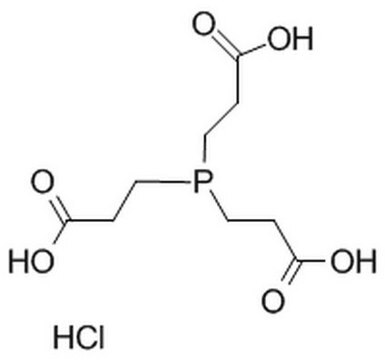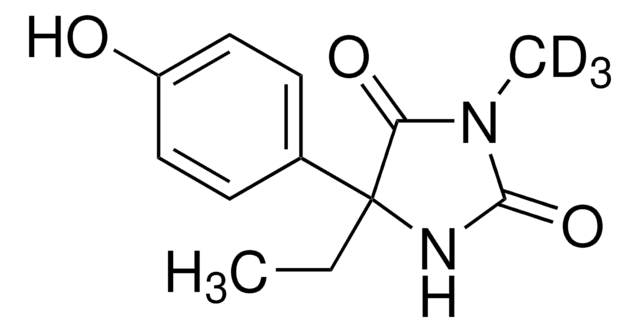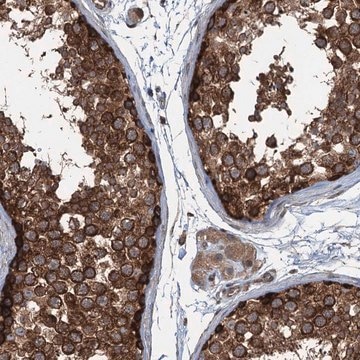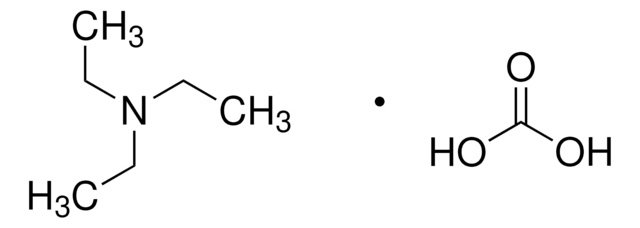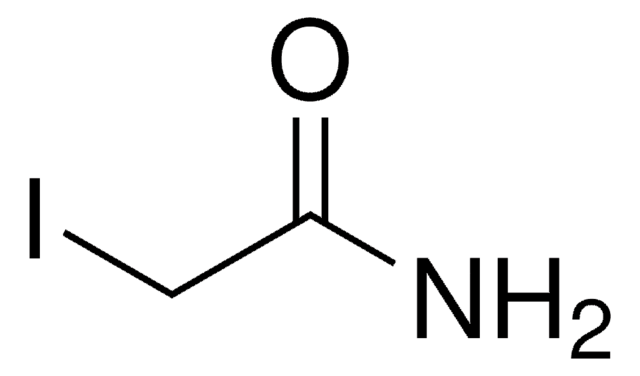646547
Tris(2-carboxyethyl)phosphine hydrochloride solution
0.5 M, pH 7.0(aqueous solution; pH was adjusted with ammonium hydroxide)
Synonym(s):
TCEP
About This Item
Recommended Products
Quality Level
concentration
0.5 M
refractive index
n20/D 1.367
pH
7.0(aqueous solution; pH was adjusted with ammonium hydroxide)
density
1.041 g/mL at 25 °C
SMILES string
Cl.OC(=O)CCP(CCC(O)=O)CCC(O)=O
InChI
1S/C9H15O6P.ClH/c10-7(11)1-4-16(5-2-8(12)13)6-3-9(14)15;/h1-6H2,(H,10,11)(H,12,13)(H,14,15);1H
InChI key
PBVAJRFEEOIAGW-UHFFFAOYSA-N
Related Categories
General description
Application
- to cleave cysteine residues in a synthetic peptide
- in reduction buffer for RNA Sequential Probing of Targets (SPOTs) imaging
- for the reduction of oligonucleotides
- as reducing agent during mitochondrial isolation
Biochem/physiol Actions
related product
signalword
Danger
hcodes
Hazard Classifications
Eye Dam. 1 - Skin Corr. 1B - STOT SE 3
target_organs
Respiratory system
Storage Class
8A - Combustible, corrosive hazardous materials
wgk_germany
WGK 1
flash_point_f
Not applicable
flash_point_c
Not applicable
ppe
Faceshields, Gloves, Goggles, type ABEK (EN14387) respirator filter
Certificates of Analysis (COA)
Search for Certificates of Analysis (COA) by entering the products Lot/Batch Number. Lot and Batch Numbers can be found on a product’s label following the words ‘Lot’ or ‘Batch’.
Already Own This Product?
Find documentation for the products that you have recently purchased in the Document Library.
Customers Also Viewed
Articles
In this study, we developed a rapid trypsin digest kit that, at elevated temperatures, yielded reliable, reproducible results in less than 2 hours on a wide variety of substrates for mass spectrometry.
Our team of scientists has experience in all areas of research including Life Science, Material Science, Chemical Synthesis, Chromatography, Analytical and many others.
Contact Technical Service
![Tris[(1-benzyl-1H-1,2,3-triazol-4-yl)methyl]amine 97%](/deepweb/assets/sigmaaldrich/product/structures/179/695/86a721c8-2a4c-4e4f-bc36-6276ce7a941f/640/86a721c8-2a4c-4e4f-bc36-6276ce7a941f.png)
